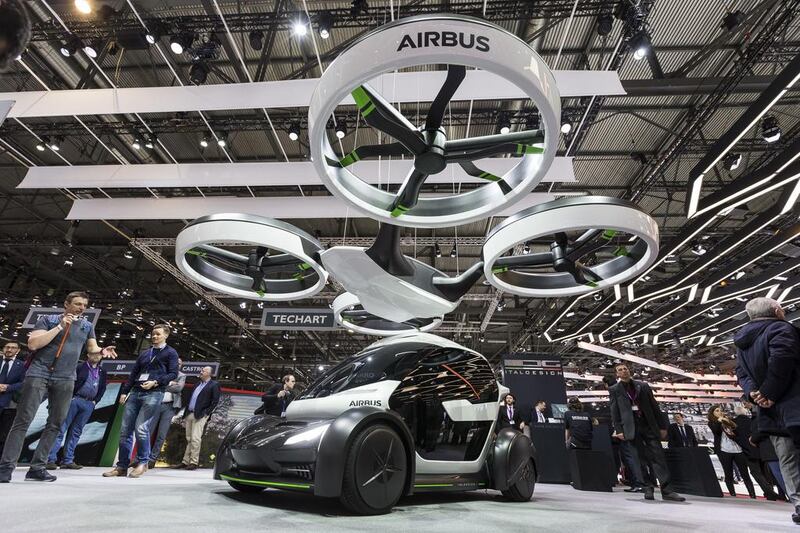Flying cars have been around for ages but have never caught for two main reasons: driving a vehicle with a pair off wings strapped to the roof looks ridiculous (as does the driver); and they need a clear runway to take off.
But, what if you needed to get from Abu Dhabi to Dubai for an important meeting but traffic on the Sheikh Zayed Road is at a standstill – wouldn’t it be appealing if, via your smartphone, your car could simply take to the air (with not a wing in sight) and clear the snarl-up in one go?
Well, Airbus along with its partner Italdesign,aims to give you that option.
At this week’s 87th Geneva International Motor Show, Airbus gave the world-premier of Pop.Up, the first modular, fully electric, zero-emission, wingless flying automobile system. Or, in Airbus jargon, “a modular system for multi-modal transportation that makes full use of both ground and airspace”.
It is, the France-base aerospace major said, “a concept vehicle system designed to relieve traffic congestion in crowded megacities”.
In essence Airbus foresees a system of use similar to the network of shareable bicycles that was set up a few years ago by the then London Mayor Boris Johnson – flying Boris Bikes, if you will.
To use Pop.Up, passengers plan their journey and book their trip via an app. The system automatically suggests the best transport solution, either the air or road, and configures your vehicle accordingly. Or it may suggest joining other means of transport, such as a train or a hyperloop, the Tesla chief Elon Musk’s vision for high-speed pod transport.
To beat traffic jams, the car disconnects from the ground module, its chassis in effect, and is carried by an autonomous 5 metre by 4.4 metre electric air module propelled by eight counter-rotating rotors. In this configuration, Pop.Up becomes an urban self-piloted flying car.
The vehicle transforms itself into a road car by simply decoupling from the flying part and reattaching to the carbon-fibre chassis. Once passengers reach their destination, the car autonomously returns to dedicated recharge stations to wait for the next customer.
“The Pop.Up vehicle combines the flexibility of a small two seater ground vehicle with the freedom and speed of a vertical take-off and landing (VTOL) air vehicle, thus bridging the automotive and aerospace domains,” says Airbus.
At the Geneva debut, Mathias Thomsen, the general manager for Urban Air Mobility at Airbus, said: “Adding the third dimension [the air] to seamless multi-modal transportation networks will without a doubt improve the way we live and how we get from A to B.”
Given that Dubai’s Roads and Transport Authority (RTA) chief said the agency aims to have flying cars capable of carrying a person operational by the summer, the Airbus vehicle may have a ready-made market. The RTA has been testing an autonomous aerial vehicle (AAV), and “is making every effort to start the operation of the AAV in July 2017”, said Mattar Al Tayer, the director general and chairman of the RTA.
The Italdesign chief executive Jörg Astalosch said: “In the next years ground transportation will move to the next level and from being shared, connected and autonomous it will also go multimodal and moving into the third dimension.”
Or, in a nutshell, soon we’ll all be using flying cars.
chnelson@thenational.ae
Follow The National's Business section on Twitter





